Story
Creating sustainable communities and sustainable schooling
If you’ve been out and about lately, enjoying Northland’s natural environment, chances are you’ve witnessed the benefits of mahi done by Enviroschools students. Enviroschools is a nationwide programme where young people design and lead sustainability projects in their schools and neighbourhoods, learning real-life skills to address real-world problems. They fence off waterways, grow native plants and food, create sustainability based businesses and more – usually in collaboration with their communities.
Enviroschools operates in early childhood centres, primary, intermediate and secondary schools that are committed to a long-term sustainability journey. It’s supported nationally by Toimata Foundation and founding partner Te Mauri Tau; the programme launched in Northland in 2004, and Northland Regional Council (NRC) has been the Northland funder and organiser from the beginning.
Te Taitokerau is home to 148 Enviroschools – that’s 70% of Northland schools, 32% of early childhood centres, and more than 26,000 tamariki and ākonga (students).
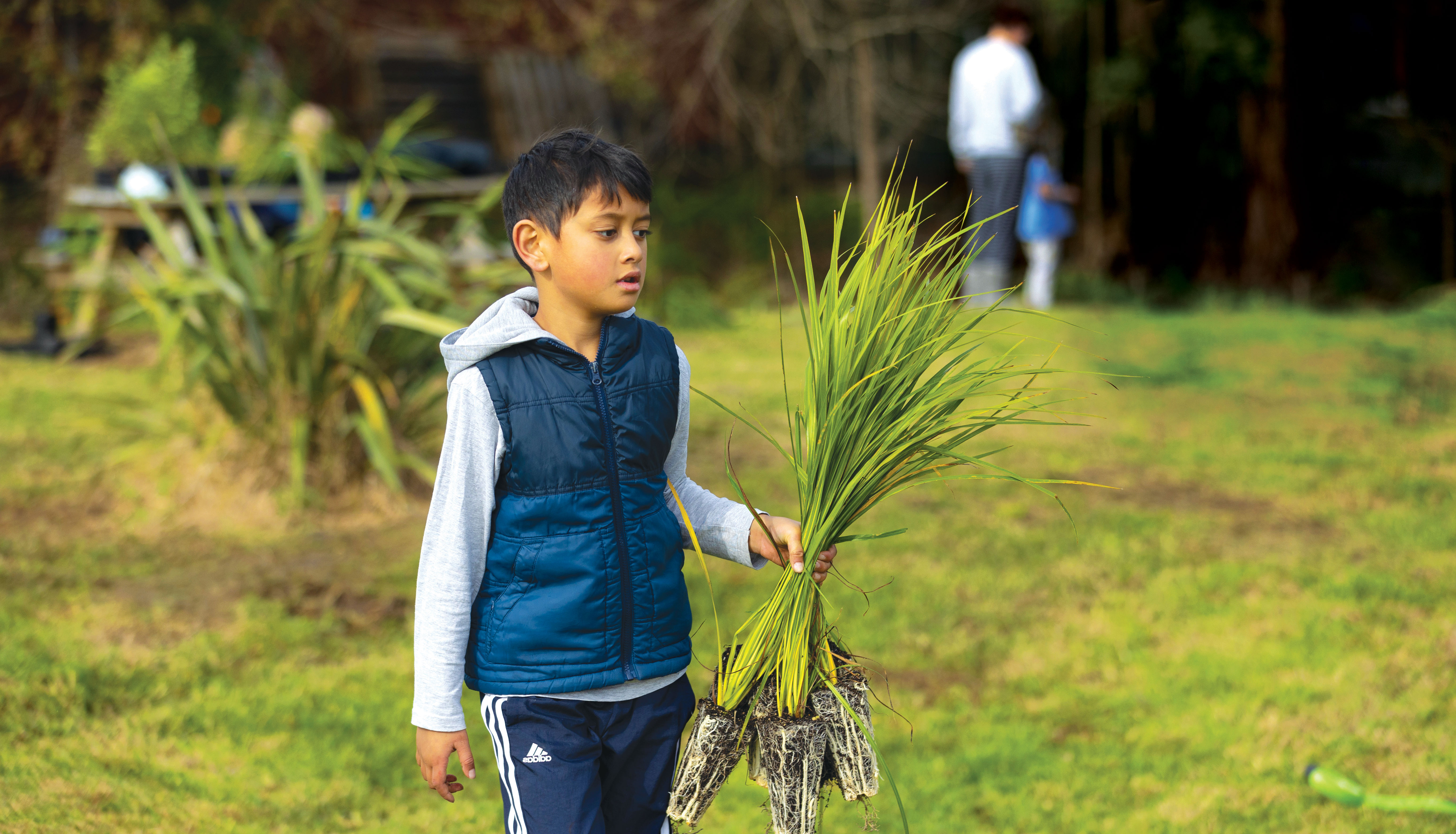
Planting day at BestStart Pipiwai Kindy's Waitaua Awa project. (Photo credit: Dawn Dutton).
Even when Covid-19 made it too difficult to run Enviroschools events, the NRC education team set up a Northland Education for Sustainability Facebook group and invented hands-on kits called Kete Aronui to help teachers create climate-action experiences.
“The next generation is learning that looking after the environment is ‘normal’ and something that should be a priority at all times,” says Northland Regional Council education manager and Enviroschools regional co-ordinator Susan Karels. “Caring for te taiao [the environment] is at the heart of what NRC does, so we love helping young people learn how rewarding it can be.”
“Kerikeri Kindergarten is a great example of how embracing Māori perspectives enriches the Enviroschools journey, from developing a kindergarten pepeha to being the country’s first kindergarten with a māra hūpara (traditional Māori playground),” says Susan. “They also encourage the protection of Papatūānuku through pest monitoring and trapping in a ngahere (bush) programme, and even became carbon negative in 2020 through reducing electricity use, waste management, tree planting and other efforts.”
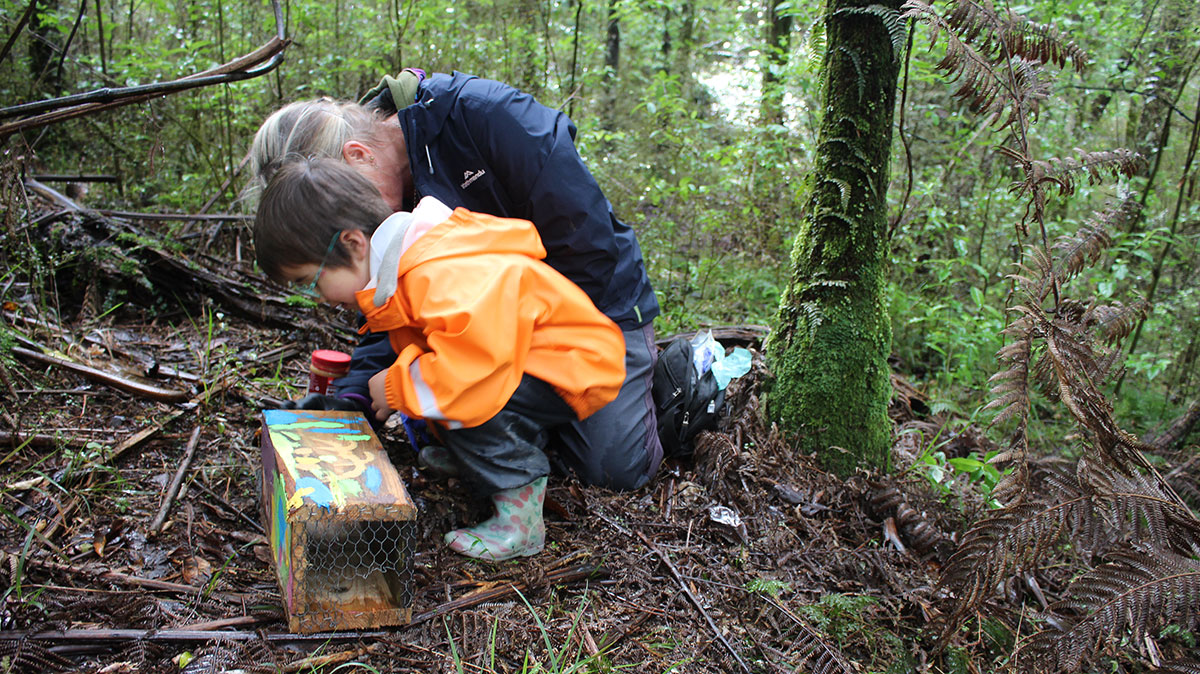
Kerikeri Kindergarten ngahere programme. The visiting rat was so big it tipped over the trap tunnel!
Keeping it Local
Each centre and school uses Enviroschools’ flexible framework to create a path that suits their local ecology, history, culture and community. It’s sustainability through learning and action, student design and empowerment.
At BestStart Pipiwai Kindy, on the outskirts of Whangārei, teachers and students used the WaiRestoration programme – created in Northland and now used nationwide – to tackle a biodiversity issue on their doorstep. Andrea Chittock, Enviroschools key teacher for the kindy, had noticed tuna (eels) and ducks had disappeared from the awa (river) behind the centre over time. This meant the water was not healthy. With guidance from Judy Crooks, Northland Enviroschools early childhood facilitator, BestStart Pipiwai began exploring the awa and how to rejuvenate it. They connected with local iwi to understand Waitaua Awa’s story, and worked with NRC to test the water quality and identify weeds growing on the banks.
Receiving an NRC Environmental Leaders Fund grant helped them buy native plants for their first whānau planting day. Judy says Enviroschools isn’t a quick fix but a long-term journey, and she loves the pride students take in their environment. “It gives tamariki a sense of empathy for plants, animals and insects, a sense of wonder and joy in their learning, and a range of cultural experiences and celebrations. They become leaders, and the older children start to teach the younger children.”
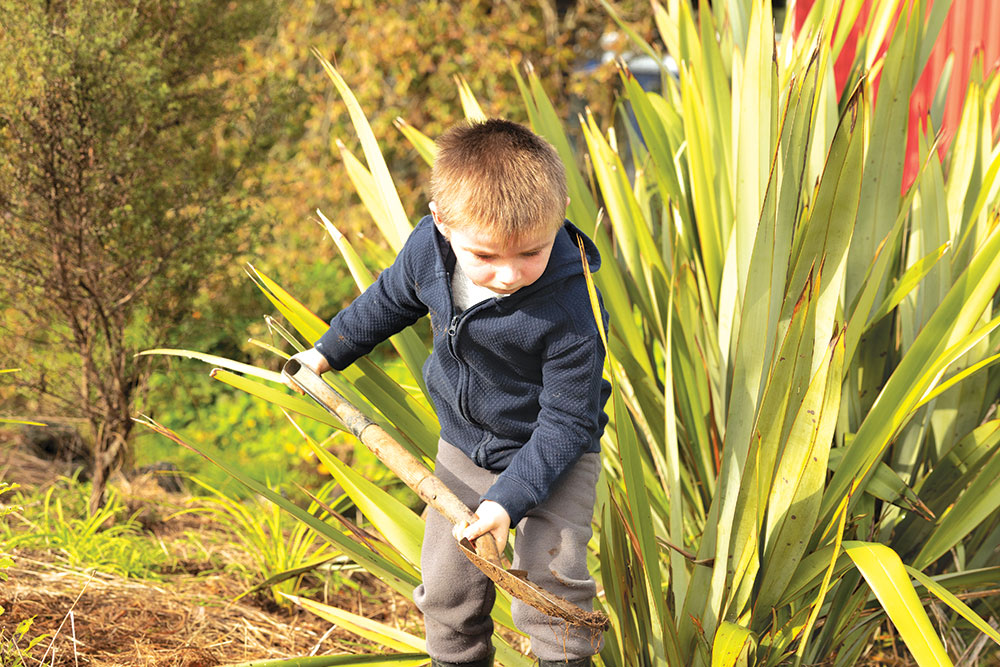
Digging in at BestStart Pipiwai Kindy's Waitaua Awa project. (Photo credit: Dawn Dutton).
As part of their agriculture and horticulture classes, Ruawai College and Dargaville High School students helped at a waterway planting day for a local farm involved with the Kaipara Moana Remediation (KMR) programme, New Zealand’s largest landscape-scale remediation project.
Guiding Lights
Celebrating successes, learning from challenges and setting goals is part of the Enviroschools Reflection process. The stages – Bronze, Silver and GreenGold – describe the depth and breadth of each school’s mahi. Up near Mangonui, Oruaiti School went Green-Gold in July 2021. Like other GreenGold Enviroschools, they have a whole-school approach to sustainability, and every class works on different projects – from extensive planting around the school wetland to harvesting honey from their beehives and fruit from their orchard.
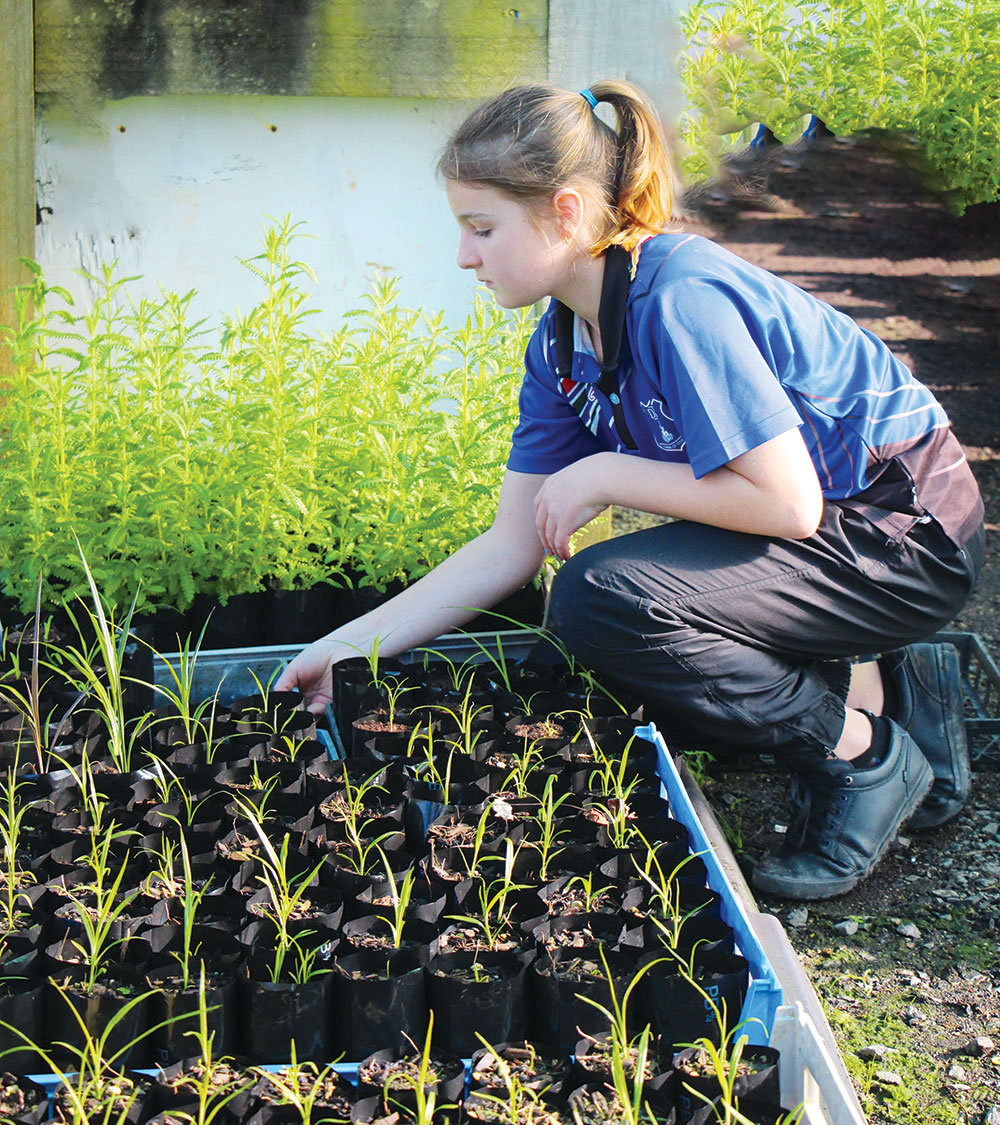
A Dargaville Intermediate School student tends to the plant nursery.
The school is working with local hapū and NRC via CoastCare to help strengthen the dunes at nearby Taupō Bay, which were badly affected by weather events. Gracie, 10, and Levi, 11, explain, “We learned how to find the area of an irregular shape, and used our times-table knowledge to find the square metres of the dunes. Then we did a load of reading about sand dunes and wildlife, and calculated how many plants we had to buy.” The class also designed and wrote signs to inform the public about the dune work, and will grow pīngao plants for more planting.
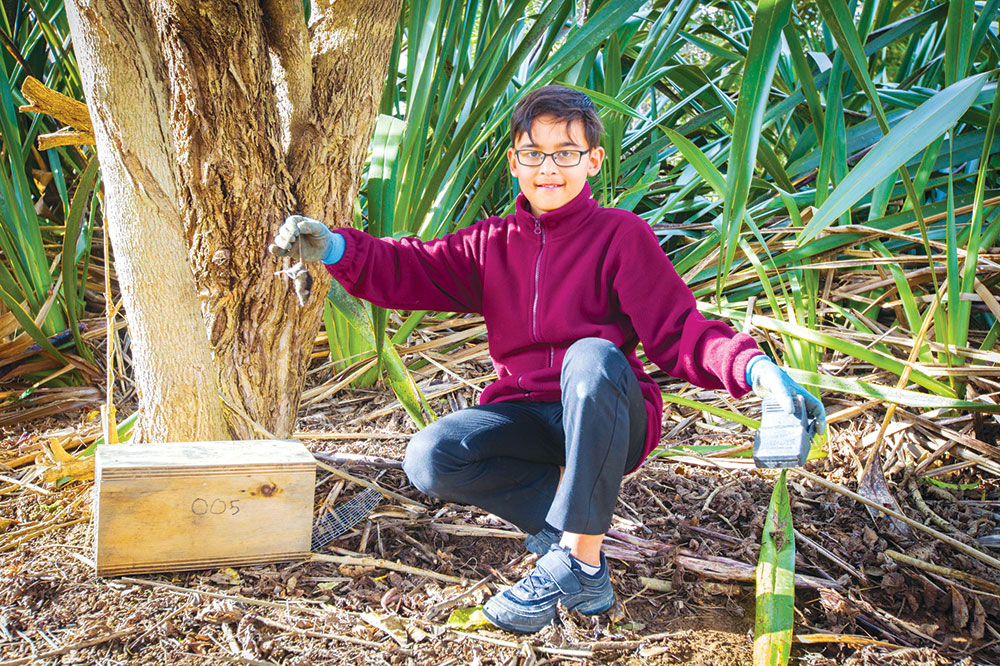
A student from Oruaiti School holds a mouse caught in the trap.
Eye on the Future
This mahi isn’t just something to do at school: the experience and connections students gain can create career opportunities. Enviroschools’ Project Pest Control and WaiFencing courses provide NCEA qualifications, and NRC employs several former Enviroschools students in biosecurity, biodiversity, land management and coastal management. Dargaville Intermediate is a shining example of the value of Enviroschools: they run what is likely Aotearoa’s largest school-based nursery, growing up to 10,000 plants annually. Even if students don’t go on to work in environmental fields, an Enviroschools education means they’re learning powerful lessons about kaitiakitanga, collaboration and problem-solving. Protecting our natural world is second nature for a generation of tamariki and rangatahi, and Northland is reaping the benefits.
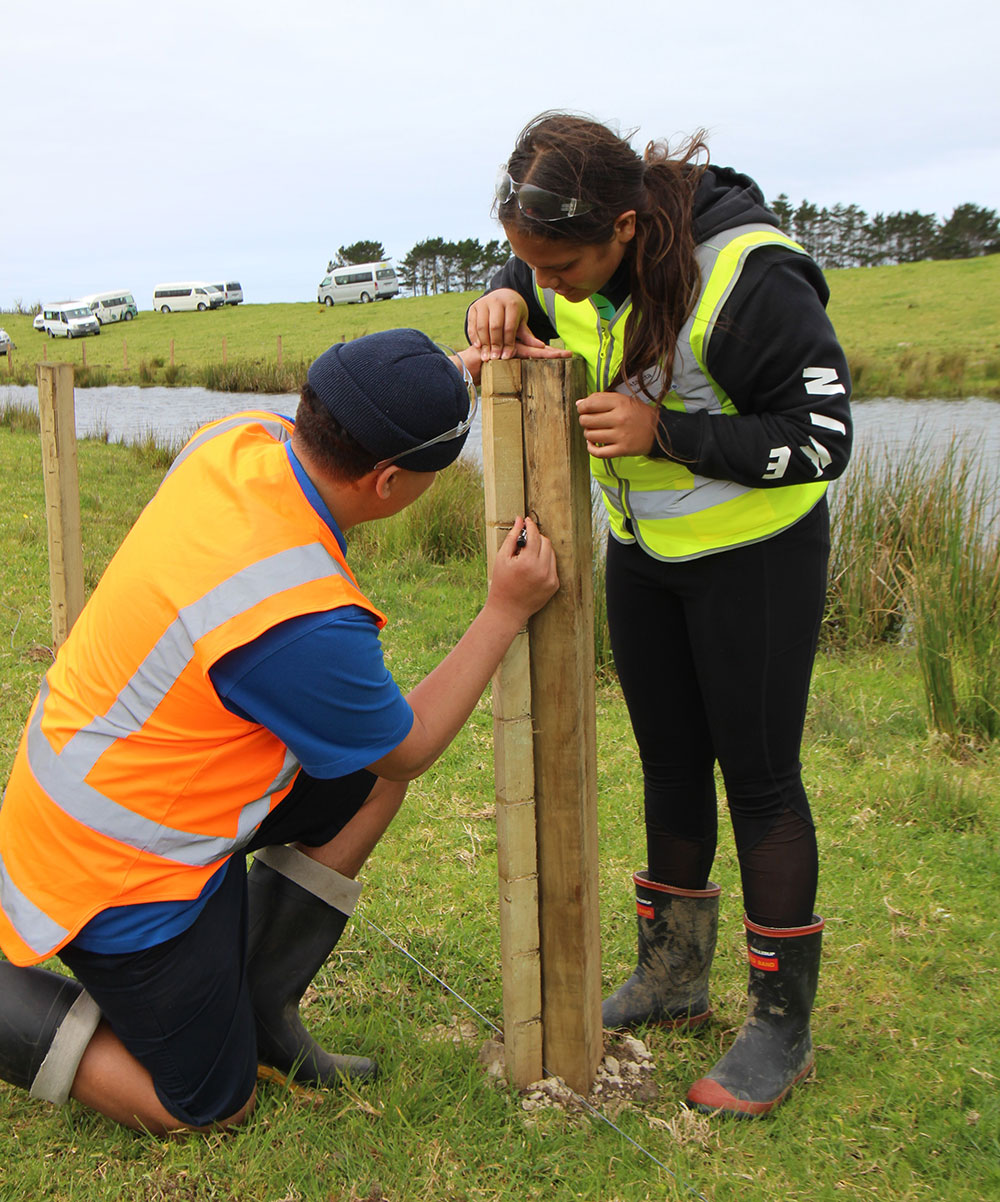
WaiFencing students marking the posts ensure wires are kept straight.
